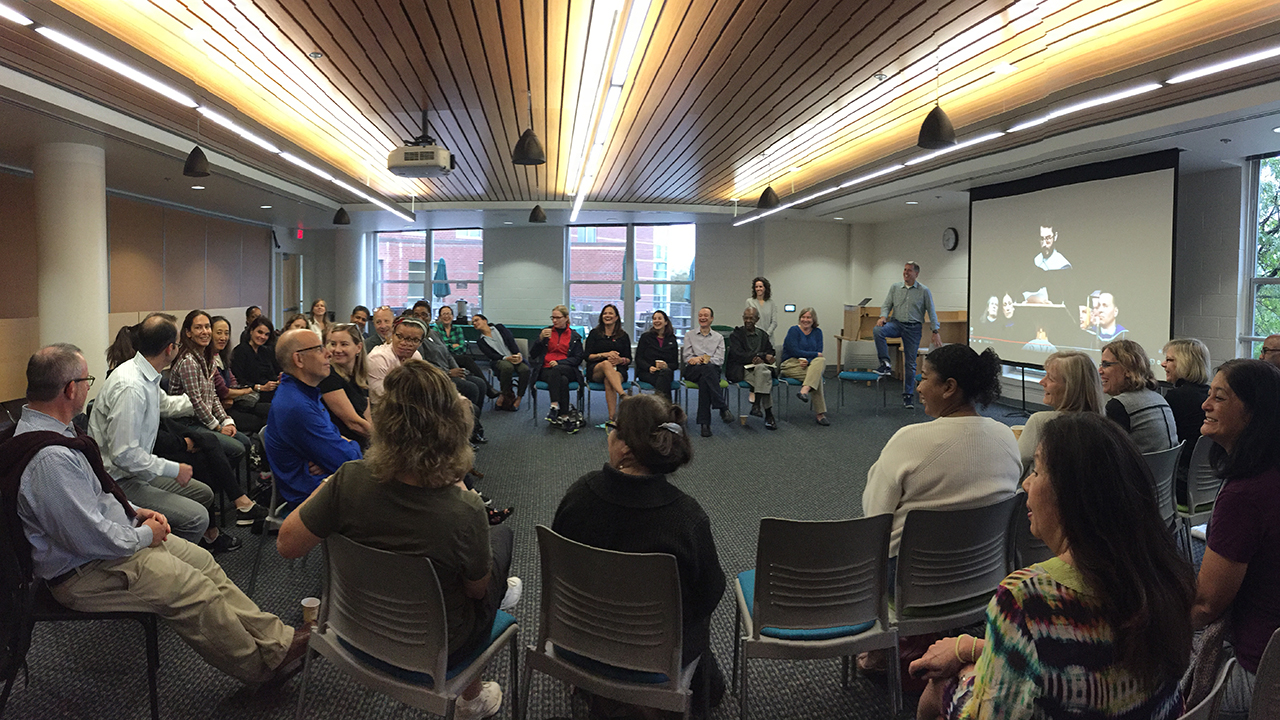High School dean Bobby Asher and High School counselor Amy Killy definitely hit on a hot topic when they invited parents to a conversation about what time spent on the internet and engaging in social media are doing to the adolescent brain.
More than 50 parents were asked to put their smart phones into a box and take an expedited journey through Bobby’s direct experience, research, and consultation to better understand the impact of virtually unlimited access to screens. Download the presentation »
Bobby’s objective was simply to share his concerns about how screens seem to be impacting GDS students and to think out loud with the parent community to be proactive about how we can best support their development and mediate any potential damage.
The literature clearly speaks to the opportunities and the challenges of connectivity. However, many of us—both adults and adolescents—have fully engaged in the online world with little understanding of the trade-offs and significant impacts on how our brains receive and process information. Bobby asked us to consider what we might be missing when screens are omni-present—from noticing what’s happening outside a car window to taking time to reflect and share feelings. Bobby compared the unquestioning adaptation of smart phones to the introduction of fast, processed foods with the unanticipated consequence of the obesity epidemic. Typically, we don’t know what we are missing until forced to unplug, even for a brief time.
Bobby and Amy shared examples from their recent service trip to Houston with GDS peer leaders. Faced with restrictions on their access to phones, the students were surprised to experience more meaningful conversations and deep connections with one another and co-workers.
As a parent seeking clear instructions, the conversation reached few conclusions. Even with growing and deepening expertise, the answer about what to do seems to be “it depends.” It depends on your family and your student and the context for each “screen/no screen” decision. It also depends on the capability of parents to hold ourselves to reasonable standards, as well as our willingness to enforce limitations which can feel arbitrary or may in fact decrease engagement when others are planning or in study groups. Parents, including Bobby and Amy, shared various strategies for carving out time without screens, including limited access during class or meals, low-tech Tuesday, no screens in cars or when hanging with friends, set times when the wi-fi goes off, etc.
I was struck that the best hope for high school students may be to share the information and ask them to shape expectations and boundaries that create space for non-screen time. It feels late in the game for a new layer of rules and restrictions, and, at least in my house, the battlefronts have shifted from self-regulation to focus on respectful engagement in the outside world (including social media). However, I think my middle schooler is in a sweet spot for clear limitations and purposeful use of screens. I am also thrilled to know that many others in the GDS parent community share my anxiety in the technology space and we can work collectively to listen, share ideas, and support one another to find our own solutions.


